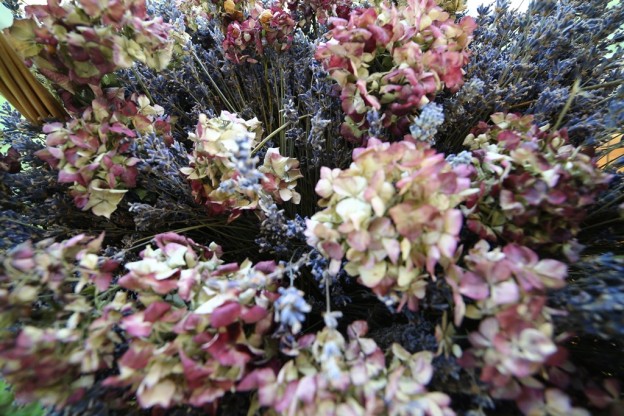What is the difference between organic and conventional viticulture?
The major difference is that organic viticulture does not make use of the modern pesticides. Hence, excluded is the application of systemic pesticides, which penetrate into the plants’ tissues from the roots to the fruits, but alternative eco – preparations are used that strengthen the immune system and natural defenses of the plants. To the limited extent also contact sprays based on copper and sulfur compounds are used. To fight of the pests bio – agents are used such as settlement of predatory mites in the vineyards. The use of herbicides is also excluded, even if it puts increased demands on the mechanical working of soil in the strips under the vines, which however, thanks to that grow in “living soil” rich in diverse soil organisms. In contrast, the famous pedologist Claude Bourguignon said about the conventionally cultivated vineyards, that he saw more life in the sands of the Sahara than in the vineyard soil of Bordeaux.
What is so special about the bio – grapes?
By ceasing to protect the vines with systemic pesticides we push them to mobilize their own immune system. Bio-grapes have therefore, similarly as other bio-products, higher levels of disease-fighting nutrients, as compared to crops grown in conventional farming. These substances also include resveratrol, which is found in red wine and ranks among the most potent natural antioxidants. At the same time bio-grapes do not contain pesticides residues. This is an important advantage, especially given the fact that the US- based Environmental Working Group, a consumer advocate and protection nonprofit research organization, put conventionally grown grapes on its 2003 list of twelve foods most contaminated with pesticides.
How does that influence the wine you are producing?
Through the gentle low-intervention approach applied to the grapes in our cellar, the whole set of disease-fighting and immunity-enhancing substances, along with other nutrients, gets transferred into the wine, increasing thereby its nutritional value. At the same time, the grape skins are populated with vital yeasts and bacteria, which are only waiting to get into contact with the must and start their work in transforming the grapes to wine. Last not least, similarly as the grapes, also the wine is free of pesticide residues. These are the physico-chemical factors which can be easily experimentally proven; however, the sensory evaluation reveals also a difference which is difficult to be put in words. Something the Germans describe as das gewisse Etwas (that certain something) and the French express as je ne sais quoi ( I dont know what)…
Why are your wines authentic?
Eco-viticulture, without irrigation, is the necessary condition for creating authentic grapes. Even such grapes may, however, lose in the wine-cellar their unique character, reflecting the varietal, vintage, and terroir specifics. To enhance further the autenticity of our grapes during their vinification, we are working with the nature by creating favorable conditions and allowing sufficient time for all processes in the cellar to evolve and terminate naturally. At the same time we do neither add nor remove anything from the must or wine, with the exception of a small quantity of sulfur dioxide. Neither do we adjust the content of sugar or acidity. These parameters are carefully followed in the vineyards and the grapes are picked when their content is optimal, or at least acceptable. Our wines can therefore vary from year to year, depending on the conditions of the particular vintage.
What do you mean by “the wine is to make itself”?
Grapes and wine are complex multi-component systems undergoing complex biochemical processes. Nowadays a lot is known but still a lot remains unknown. Any interference in the system causes besides the intended effect also side reactions, which are not always fully recognized. The harder the impact, the more the natural balance of the wine is disturbed. Therefore we try to interfere only at a minimum. However, we are creating optimal conditions and allowing enough time for processes to evolve naturally or to re-establish the impaired balance after each intervention. In the spirit of authenticity since 2015 we refrain also from filtering and fining of the wine. The red wines are perfectly cleared during the usual 24 months of barrel aging. Rose and white wines, which mature for a shorter period of time usually clear spontaneously as well, however, lack the sparkling clarity of filtered wines and may contain a light deposit consisting of proteins and yeast residues, the so called “mother”. This deposit has however high nutrition value, since it contains active vitamins, enzymes and probiotics.
How much sulfur do you add to the wine?
In line with our approach, we are minimizing addition of sulfur dioxide to the must and wine according to the principle “as much as necessary, but as little as possible”. Our long-term goal is not to exceed the total sulfite content in finished wines at 40 mg / l in white and 30 mg / l for red wines respectively. On our website we are publishing the analytical results of each of our wines, so it can be checked how closely are we fulfilling this goal. For comparison, the current limit in the EU / SK allows the total sulfur 200 mg/l for white wine and 150 mg/l for red vine or 150 mg/l for white bio-wine and 100 mg/l for red bio-wine. Since 2015 some of our wines were produced without added sulfur dioxide.
What is that deposit at the bottom of the bottle?
Potassium or sodium bitartrate, or tartar, poetically called also wine diamonds or la crème de tartre. According to the famous sommelier and master of wine Ronn Wiegand, tartrate crystals are as natural to wine as seeds are to a watermelon. However, it must be admitted that the majority of consumers is annoyed by them in a similar manner. That is why we take the time to let most of the tartar precipitate naturally prior to the bottling; however, without harder technological interventions further precipitation cannot be entirely prevented. According to the author of a textbook for wine technologists, the master of wine David Bird, much easier then to prevent tartar to precipitate in the bottle is to educate the wine lovers to accept its presence as something natural, and decant the tartar crystals carefully before drinking…

